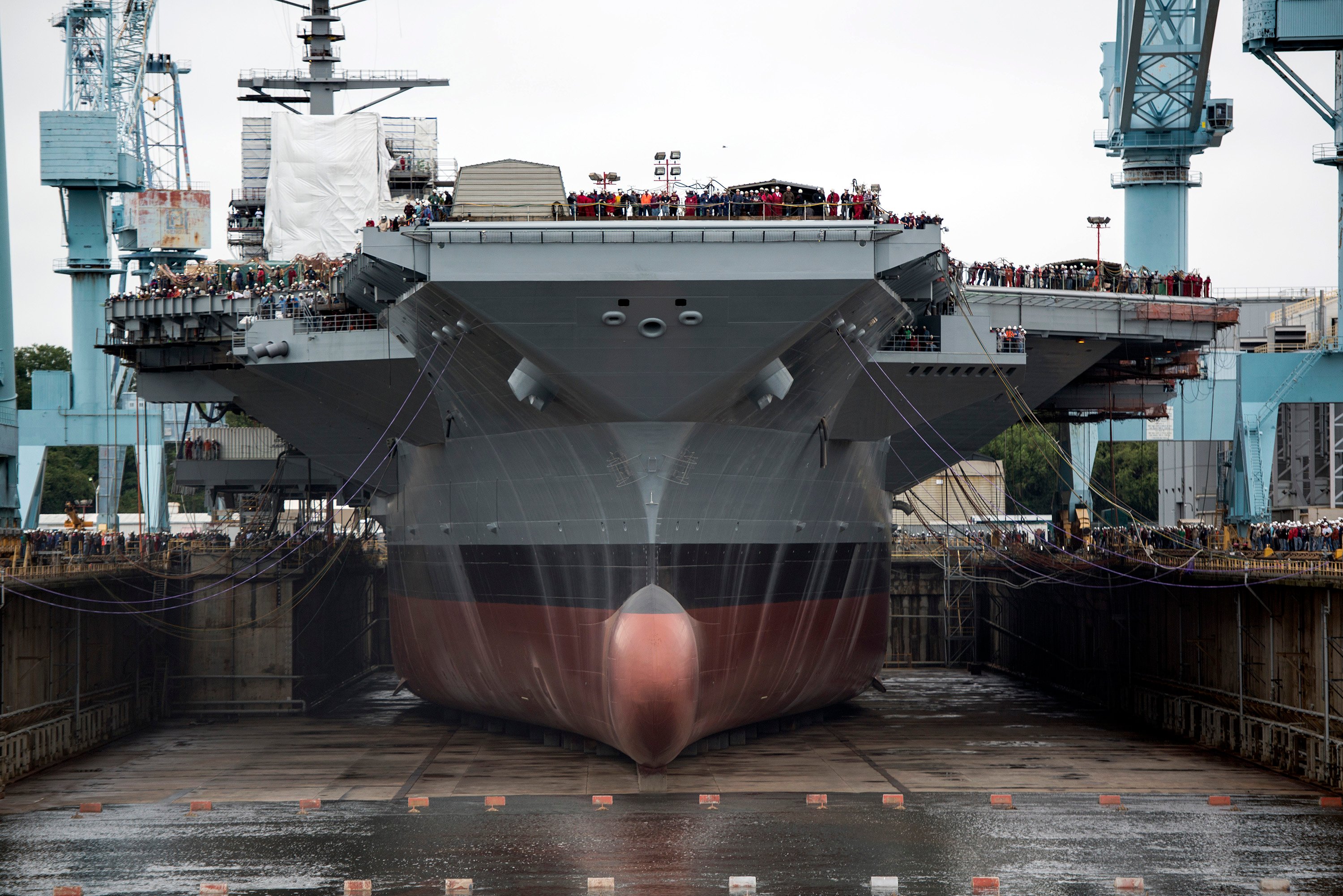
Only one of the Navy’s 18 dry docks used for maintaining the nuclear-powered carrier fleet can support a Ford-class carrier, Navy officials told USNI News.
Dry Dock 8 at the Norfolk Naval Shipyard can handle a Ford-class carrier, but only after a temporary cooling water systems is set up. A permanent cooling water system and other upgrades to Dry Dock 8 are scheduled to occur before USS Gerald R. Ford (CVN-78) enters its first planned dry dock availability, Anna Taylor, a Naval Sea Systems Command spokeswoman, told USNI News in an email.
The Navy also plans to upgrade a West Coast dry dock to handle the future USS John F. Kennedy (CVN-79), Taylor added.
Mike Petters, chief executive of Huntington Ingalls Industries, whose Newport News Shipbuilding yard is the sole builder of aircraft carriers for the U.S. Navy, said in a conference call with analysts earlier this month that the fixes required were not complicated. The hull size of the new class is roughly the same as the Nimitz-class carriers that make up the rest of the fleet, so Petters said the shipyards do not need to do many physical changes to piers and docks.
“There are clearly differences between Ford and Nimitz,” Petters said of the carrier classes. “The power requirements, those kinds of things. I think those are all things that can be addressed and will be addressed by the government shipyards, so I don’t really see a major fundamental change in the way the Ford-class is going to be supported from the industry.”
The Navy is also planning improvements to the Puget Sound Naval Shipyard and Intermediate Maintenance Facility’s dry dock infrastructure before the future USS Kennedy (CVN-79) is expected to enter its first availability, Taylor said. Doing so will give the Navy two dry docks – one on each coast – capable of supporting Ford-class carriers.
Kennedy is expected to be christened later this year and is still years away from joining the fleet.
The need to upgrade dry docks to support the new class of carriers comes amid both a push to modernize and optimize the four public shipyards that work on carriers and submarines, as well as a realization that the need for maintenance facilities is far greater than what’s available at public and private yards.
The Navy’s long-range ship maintenance and modernization plan, released in March, details the mismatch and suggests some strategies to fix the problem.
The Navy’s Shipyard Infrastructure Optimization Program (SIOP) is a 20-year, $21-billion program to modernize the Navy’s four public shipyards and is a major part of the solution laid out in the long-range plan, Taylor said.
With a renewed focus on readiness, there’s an opportunity for private shipyards willing to make investments in their facilities, too, to pick up some more Navy maintenance business, Petters told analysts during the conference call.
The Navy’s long-range ship maintenance and modernization plan also states that the Navy needs private sector help.
“Sustaining the 355-ship fleet will require changes to both public and private industrial capability and capacity. Current infrastructure will require update and refurbishment to support modern classes of ships and repair. Likewise, additional dry docks will be needed to address the growing fleet size,” the plan states.
Petters cited the Navy’s work improving readiness among its aviation community as a good sign the Navy can translate this experience to the ship repair business. However, the Navy needs private shipyards to address its backlog of repair and maintenance work.
“The Navy has taken a hard turn on how do you do readiness in a more efficient way, and that’s being led from the secretary’s office,” Petters said. “We’ve talked about readiness in my career for a long time. This is a no-kidding effort to go get it sorted out.”
Predictability in contracting, though, is critical if the private sector is going to invest in upgrading its yards, Petters said.
“I think we’re on the front end of that to see whether we can actually create more efficiency there,” Petters said. “We certainly want to participate in that, and so far we’ve kind of got our toe in the water with the Virginia-class (submarine maintenance) support. And we’ll see what other opportunities it presents. So little early for us to try to predict how that’s all going to shake out.”





